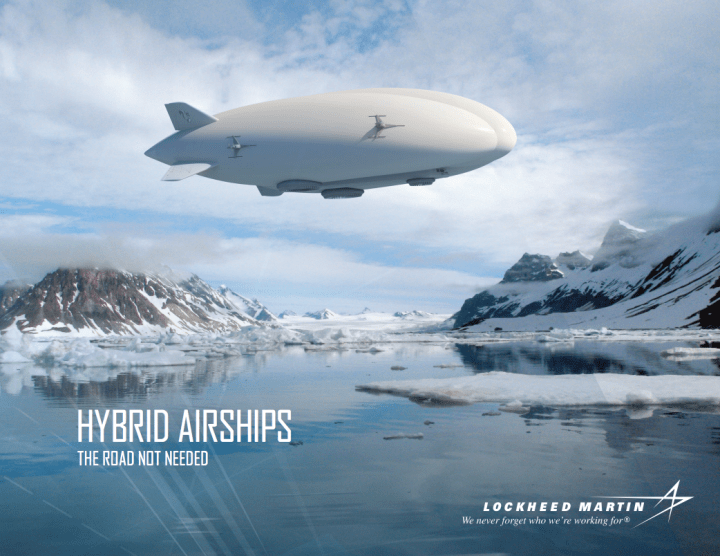
That’s why the more likely customers are expected to be corporations in the mining, oil, and gas industries, players who need to transport enormous amounts of cargo over long distances that often lack the necessary infrastructure to make this a convenient process by road or rail. Enter LMH1 airships — the new standard in transportation efficiency.
Lockheed Martin and Hybrid Enterprises are joining forces to sell these huge ships, with potential for customers to be in the air as early as 2018. A two-person crew can take up to 19 passengers, and more importantly, hoist 20 tons of supplies, equipment, and other general luggage for even the heaviest of packers.
Better yet, the airships can come to rest on any surface, so if an emergency water landing is needed, have no fear. But then again, you’ll have to find a space big enough to actually accommodate the airship’s size, and bear in mind that these vehicles land by essentially sticking to the ground (or sea) by way of a vacuum.
The LMH1 also holds great promise for disaster relief efforts, as it would be able to deliver aid supplies on a large scale to rural, difficult-to-reach communities that are often stranded after natural disasters, particularly in developing nations. Oh, and the military is another potential client, notes Lockheed Martin executive vice president Orlando Carvalho.
In an interview with Reuters, Rob Binns, chief executive officer of Hybrid Enterprises, noted of the 20-year effort that was required to bring this remarkable innovation to market, “We’re going to be able to reduce the cost of transportation to remote projects around the world and open up projects that were previously thought inaccessible.” And these days, accessibility looks like a giant airship.


